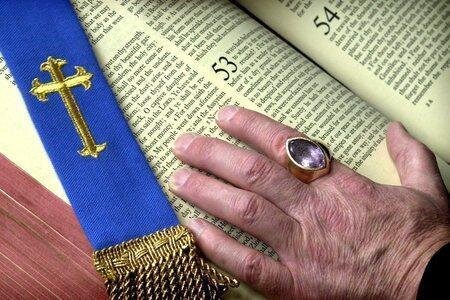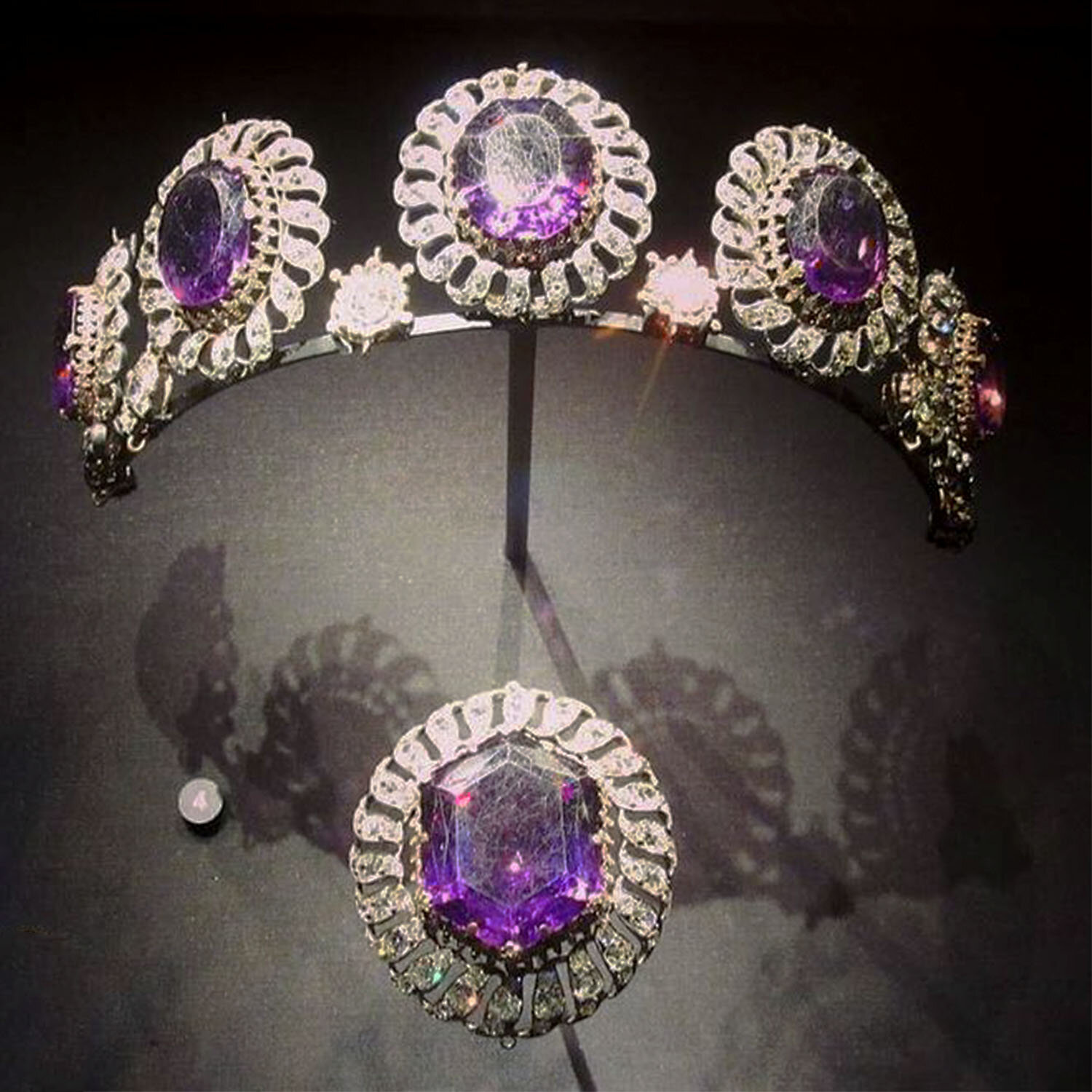Amethyst - February’s Birthstone

Regal violet, with the clarity of crystal, amazing amethyst is the best birthstone there is (ok, I admit favouritism - amethyst is my birthstone).
This is the beautiful crystal that has captivated humans since it was first found in river gravels and maybe glinting in the cavities & geodes in caves. Such cavities were left by gas bubbles in volcanic rocks, after which scalding hot aqueous solutions soaked into the rocks, crystalizing as they cooled over millions of years. Some of these cavities can be truly enormous ( see image) - The Empress of Uruguay is the largest amethyst geode in the world at 3.27 meters tall weighing 2.5 tonnes.
Amethyst is the purple gem variety of quartz - Earth’s most abundant mineral, formed by its most abundant elements: silica and oxygen with a trace amount of iron. We find it in a wide range of hues from delicate lilac to the most prized saturated tones, and its purple hues were caused by a balance of just the right boost of natural radiation in the vicinity of its crystallisation affecting just the right ionic charge of iron in its crystal lattice - Goldilocks geophysics millions or billions of years ago (specifically, a conversion of trivalent iron into the tetravalent state: Fe3+ → Fe4+). Beware though, the process works in reverse so don’t leave your amethysts in strong light or they will fade.

Ancient sources of amethyst would most likely have been river tumbled crystals mainly from Sri Lanka and India, and being harder than most other materials, lapidaries would drill or carve the amethyst with diamond or corundum tipped tools forming beads, scarabs and other amulets. A search through the great museum collections turns up amethysts from nearly 4,000 years ago - beaded necklaces, earrings, and even this 12th Dynasty Egyptian funerary figure of the baboon god that ensured protection to the deceased’s libido in the afterlife, see image below. Amethyst was a choice gem for the elite of the ancient world to seal and mark their property, and this developed into the wealthy Romans’ love of intaglio gem rings. A beautiful Romano-British ring found in the Thetford Hoard reminds that love conquers all - a carved Cupid rides astride a lion on amethyst set in a gold ring engraved with palm leaves, see below.

The colour purple was for a while the obsession of Prince in recent pop culture, but purple has long been associated with the powerful elite - emperors, royals, nobles, religious leaders - because the colour was the most difficult to replicate in clothing or arts and was so highly prized. The rich colour of Tyrian purple to dye the hem of a high ranking Roman’s toga involved the skilled extraction of the secretions of tens of thousands of rock snails from the E Mediterranean. Another valuable colour was rich blue, obtained either from a related mollusc or from crushed lapis lazuli - ultramarine - and both colours for attire and gems were subject to sumptuary laws in the Roman era throughout the Byzantine and into in the Middle Ages. Only those of power and rank were eligible to wear these colours; we still see traces of this today in bishops’ rings, indeed an amethyst Moderator’s ring is worn for the year of leading the generally unostentatious Church of Scotland (image below).

Amethyst is found in many locations around the world, but only small quantities of the finest were in circulation throughout Europe during the Medieval period, bolstered by the mines of Austria and Idar Oberstein, Germany, the hub of Europe’s gem expertise, until the C18th when fabulous Russian gem fields were discovered in the Urals. Royally coloured amethyst from Chitanka and Mursinka regions of the South Ural mountains, near Ekaterinberg, revealed amethysts better than any seen before. Today, “Siberian” still remains the descriptor used for the finest and most desirable purple amethysts which show strong dichroism. The legendary American gemmologist GF Kunz stated in his report of his trip to the Russian gem fields in 1898:
“Perhaps the most magnificent gems from the Urals are the wonderful royal purple amethysts, changing to red by artificial light, that are found at about forty localities in the Government of Perm. For intensity of color and perfection of quality, and one might say majestic beauty, these rival almost any other colored gem. A series of them was exhibited at the World's Fair at Paris, in 1889, five of which were presented to the Czarina by the peasant who found them. Two of these measured nearly 2 inches across, and are royal purple by day, changing to rich red wine-color by artificial light, as do nearly all the Uralian amethysts.”
Around 1818 an infatuated Tsar Nicholas I bestowed upon his beautiful muse Frances Anne Vane, Marchioness of Londonderry, a suite of 6 exceptional Russian amethysts, which she accepted with virtuous affection, along with other princely gems he picked out from his Russian gem reserves. They adorned her magnificent court dress along with other magnificent Londonderry jewels, now on loan to the V&A (see image). If you ever travel to Moscow, a visit to the Diamond Fund exhibition in the Kremlin Museum is a must, where even the best amethysts you will ever see are dwarfed by heaps of gold, diamonds and famous jewels. (see link below for a virtual tour meanwhile.)
Russian amethysts were the most important source of fine gem amethysts and commanded high prices until immigrant gem miners from Idar-Oberstein, fleeing the economic slump in German trade, exploited the vast new-found gem deposits of Brazil and Uruguay in the C19th. Since then, massive quantities of fine quality gems have continued to flow from South America, lowering the price of the gem. More recently, deeply saturated fine gem amethyst has also found its way to market from south Zambia’s Mwakambiko hills, although in smaller sizes than the S American crystals. It seems we just can’t get enough of this purple gem.
The gem has a host of myths and legends. It’s name stems from the Greek "a-" (not) -" methy" (intoxicate) and is supposed to prevent intoxication and aid wit, so it’s a perfect party jewel. Definitely consider wearing an amethyst if you venture on a date or need to impress as the after-dinner speaker.
In the VIP Vault Sale we currently offer you three sculptural statement amethyst rings, designed by Maro El Khazen in Lebanon in Beirut. Maro is a beautiful woman inside and out, a super-stylish designer whose own natural power, warmth and wisdom shine from her fabulous jewellery designs and she loves to feature these huge gems. Take advantage of these promotional prices for a boost of high energy to your February mood, whether this sumptuous gem is your own birthstone or not. Which one is your pick?
Read more:
More information on quartz and amethyst http://www.quartzpage.de/amethyst.html
The Empress of Uruguay giant geode http://www.geologypage.com/2017/01/worlds-largest-amethyst-geode.html
Twelfth Dynasty baboon funerary figurine British Museum collection https://www.britishmuseum.org/collection/image/416554001 © The Trustees of the British Museum
Excerpt from Kunz, George F
A Trip To Russia and the Ural Mountains, Journal of the Franklin Institute, Volume 146, Number 873 July-December 1898 https://www.mindat.org/article.php/508/Kunz%3A+Gem+Materials+of+The+Urals
Russian location of Murzinka Mine, Prigorodny District, Sverdlovsk Oblast
Virtual tour of the Diamond Fund collection of Russian sovereign assets in the Kremlin Museum Moscow: http://www.gokhran.ru/assets/vtour/index.html


